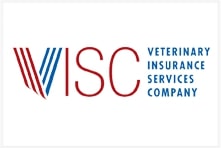This article was originally printed in the March/April 2022 issue of the California Veterinarian magazine.
While it is true that the United States is becoming increasingly diverse, it is important to note that diversity, equity, and inclusion (DEI) practices do not evolve organically within any population shift. This most likely holds true for veterinary medicine, which is considered to be one of the least diverse professions in the country. Efforts to create more diverse, inclusive, and equitable work environments require intention and reflection.
In addition, advocates fear that well-intended DEI efforts too often become mere platitudes, or the responsibility gets delegated to a diversity leader (usually a person of color), when in fact, it is everyone’s responsibility to encourage and cultivate DEI practices—particularly those from advantaged populations.
The good news is that many in the veterinary profession, including prominent leaders, are committed and willing to do the work needed to effect change. But what does DEI look like in practice? And how do we prevent DEI from becoming a ubiquitous catchphrase that can hinder real progress?
Let’s start by deconstructing this acronym—“DEI”—in order to define and differentiate the terminology. Along the way, let’s consider some pertinent questions and actions that can ensure that one of the noblest of professions is also one that prides itself on its relevance and accessibility.
Diversity: the quality or state of having many different forms, types, ideas, etc. – Merriam-Webster Dictionary
Traditionally, discussions about diversity tended to focus primarily on race, especially in the veterinary profession. This is not surprising, considering that the veterinary profession has been referred to as one of the “whitest” professions in the nation. However, we understand that diversity, in reference to populations of people, refers to a vast range of categories including, but not limited to, gender identity, sexual orientation, religion, socioeconomic status, mental and physical ability, and education.
In fact, recent definitions of diversity have become quite lengthy as we continue to recognize and acknowledge the abundance of differences among individuals. The need to diversify the veterinary profession has long been identified as a critical goal. While leaders in veterinary education and organizations like the American Association of Veterinary Medical Colleges (AAVMC) have been working to diversify the veterinary student body, there are actions that can be taken by those currently in the veterinary workforce.
Similar to the recruitment of veterinary students, efforts to recruit employees should also be considered with the goal of diversity in mind. Some questions that you might ask include: Where are your job listings posted? Are diverse populations being considered when participating in job fairs or recruitment events? How diverse is the clientele that you are serving? Are the qualifications for the positions you offer in fact limiting the scope of talent you seek? Are you connecting with the growing number of DEI-related affinity groups in veterinary medicine in order to recruit new team members?
Inclusion: the state of being included—to take in or comprise as a part of a whole or group – Merriam-Webster Dictionary
It is in our human nature to want to feel that we belong and that we are valued by others. However, diversity and inclusion do not necessarily go hand in hand. This has been recognized in veterinary education, where conventional efforts have been geared toward recruitment and admissions, but are now including an equally critical focus on campus climate.
It is one thing to have a diverse group of people that make up an organization, and it is another to ensure that everyone feels welcomed and part of the team. In fact, if diverse teams are created without attention to each individual’s sense of agency and belonging within that team—the “inclusion” piece—those who are not included may feel more alienated than if they were excluded from the team altogether. Inclusion can be a challenge for a monolithic profession, where many minority populations feel underrepresented. Representation is important and can be an inspiration for those who might otherwise choose a different career path.
However, even with a dearth of role models, there are still ways to create inclusive workplaces that are supportive of everyone. Make sure to actively seek feedback from members of your team, and consider developing a DEI statement for your workplace and publishing it on your website and in your marketing materials. Create DEI policies and pronounce them to potential new employees. Creating a culture with an authentic commitment to DEI will resonate not just with employees, but with your clients as well.
Equity: justice according to natural law or right – Merriam-Webster Dictionary
Political, social, and economic equity is about justice and fairness. Equity differs from equality in that it recognizes that certain groups of people have historically been underserved and underrepresented, and that in order to achieve true equality, systems that have contributed to these inequities need to be disrupted and recalibrated. Societal inequities can be reflected in our institutions and workplaces.
When examining your workplace for equitable practices, ask yourself: Does the leadership/management reflect the diversity within our organization? Whose voices are heard when discussing practice management decisions? Is everyone supported and encouraged to succeed? Does everyone have access to the same rewards? Can we claim gender pay equity? Achieving equity goes beyond inclusiveness in that it addresses systems and mechanisms that can result in disparate or unfair outcomes.
Imagining the time and effort needed to make considerable changes in the veterinary profession with respect to DEI can be daunting. Change takes time, but with persistent commitment and effort by all who are invested, it will come sooner. We cannot rely on inclusivity and equity emerging from diversity alone, nor can we rely on these three organizational attainments to always exist concurrently. Only when we deliberately address each aspect of DEI will we create change that is sustainable and necessary for the future of veterinary medicine.








